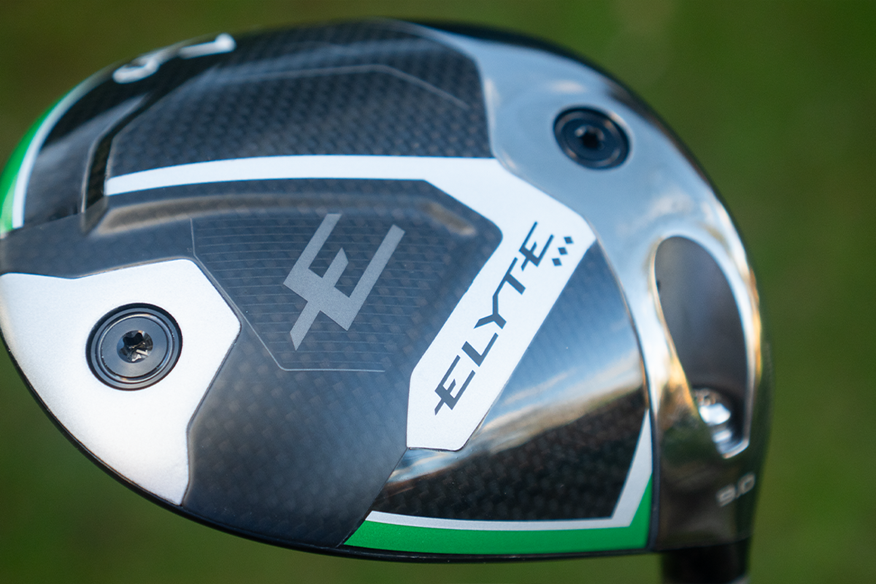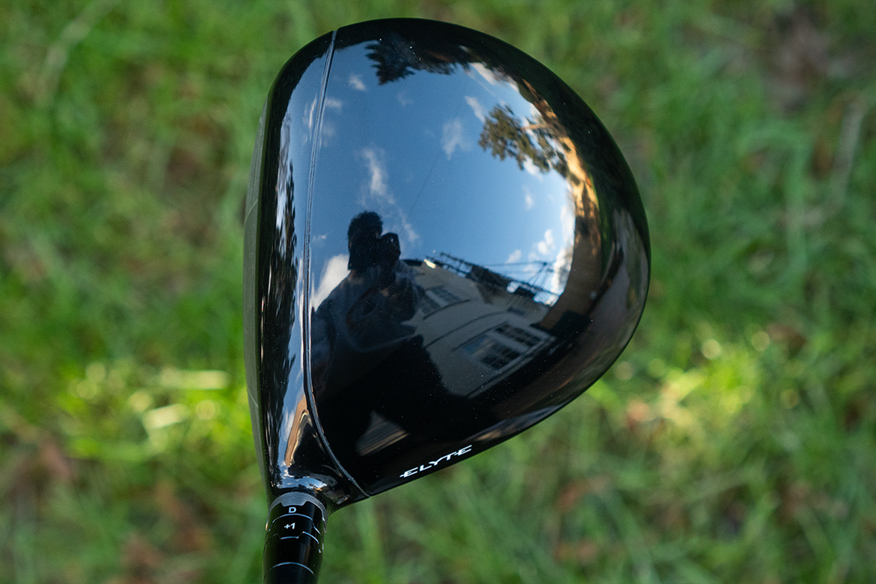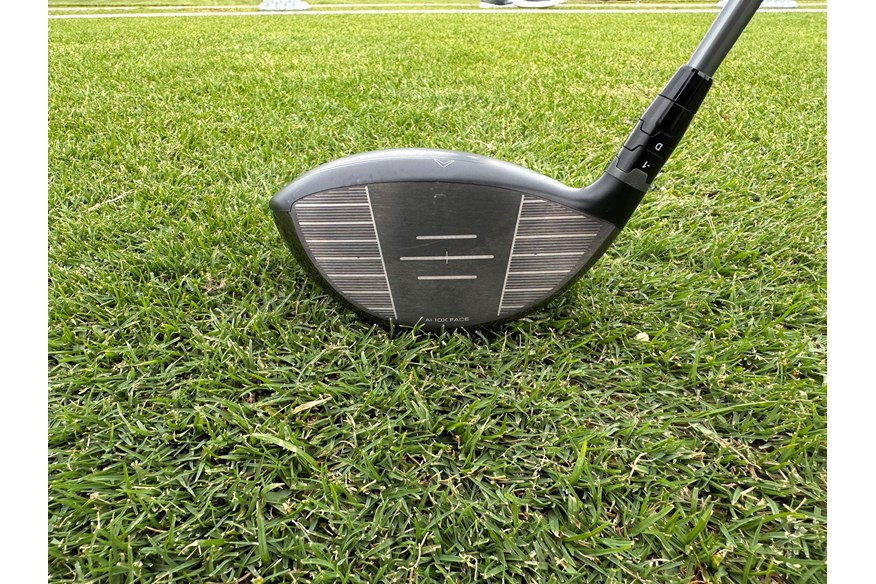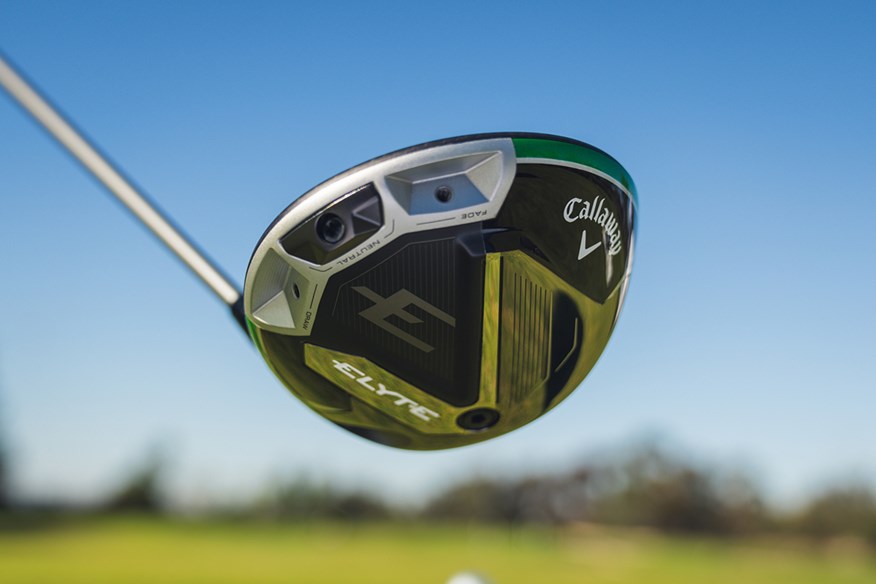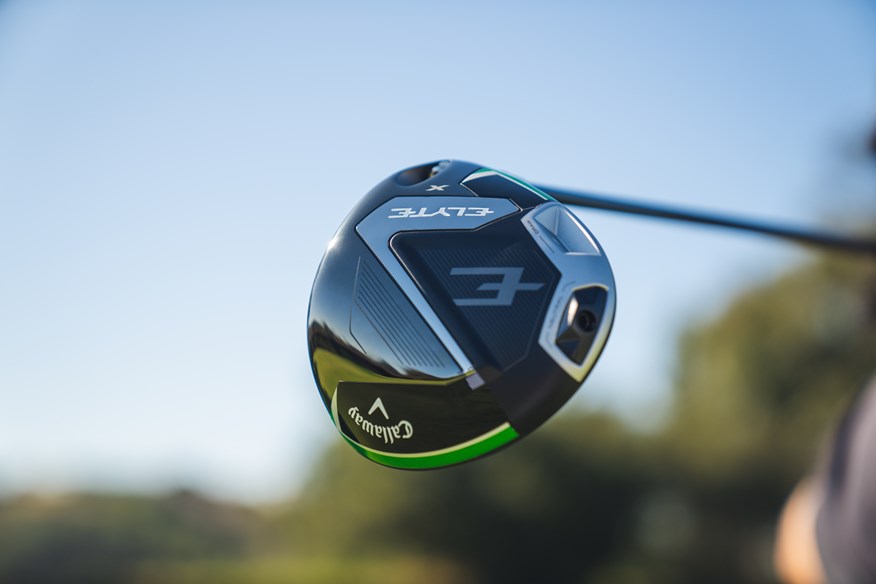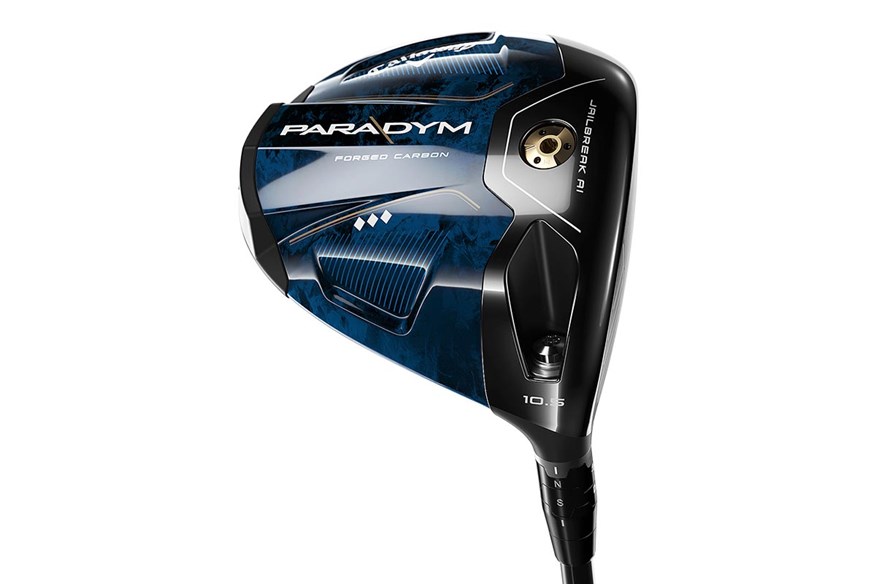Ready to Revolutionize Your Golf Game? Meet the Best Callaway Drivers in 2025 Powered by AI
Last updated:
What is the best Callaway driver for you in 2025? Our launch monitor-backed test reveals all.
The best Callaway drivers have been at the forefront of golf club development for nearly 40 years, they are a market leader when it comes to golf clubs, and throughout their history have made some of the best golf drivers of all time.
Since the original Epic in 2017, the company has plowed huge resources into harnessing the power of Artificial Intelligence to design smarter golf clubs. Thanks to tracking hundreds of thousands of real-world golf swings the most recent, Paradym, AI Smoke and Elyte models have faces optimized to counteract the most typical mishits of the intended audience of each different model.
Today Callaway makes three main driver options for shots from the tee, there’s also a versatile AI Smoke Ti 340 Mini Driver that can be used from the tee (possibly as a driver replacement), and fairway so long as your swing boasts plenty of speed. Where the Elyte Triple Diamond is one of the best low spin drivers available (it’s used by the likes of Jon Rahm and two-time major champ Xander Schauffele) the Elyte and Elyte x ranked very well in our best drivers of 2025.
Whether you’re Xander Schauffele, a decent club golfer, or a beginner golfer there’s a Callaway driver out there for you, here’s my rundown on choosing which will best suit your game in 2025.
Best Callaway Driver – Jump to:
- What type of driver do you need?
- The Best Callaway Driver
- How we tested the drivers
- Buying Advice & FAQs
What type of driver do you need?
Low Spin
The best low-spin drivers have more weight positioned closer to the face rather than towards the rear like more forgiving models. By stacking weight in a more forward position the center of gravity (the point the club rotates around) is drawn closer to the face. With a more forward center of gravity (CG) low spin drivers react differently at impact compared to back-weighted forgiving models. It’s this impact reaction that reduces spin.
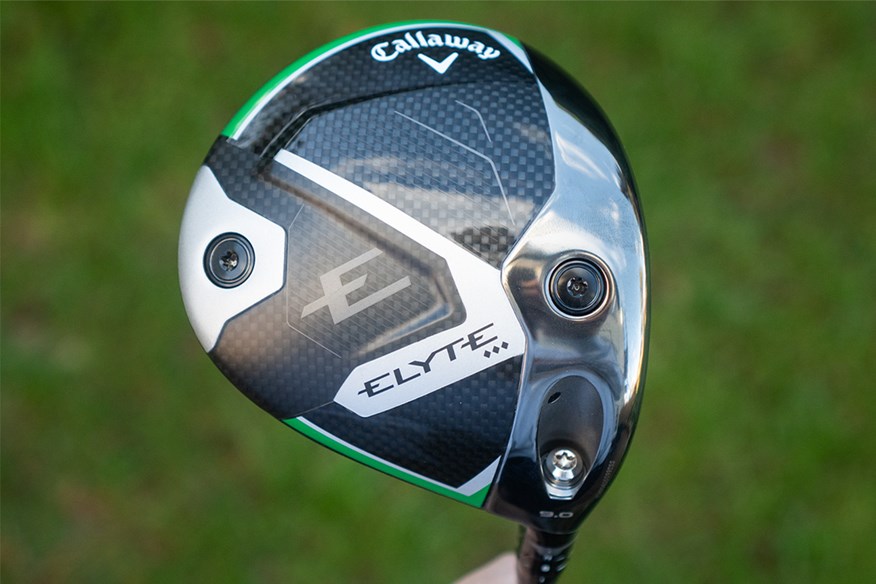
Thanks to their more forward CG low-spin drivers have lower MOI ratings, which means they are less forgiving on off-center strikes. Low spin drivers typically work best for golfers with above-average levels of swing speed, as speed usually generates more spin. Low spin drivers will generally produce faster ball speeds than more back-weighted models (as more mass is located closer to the impact location), so they’re often the longest but least forgiving option and golfers need decent levels of speed to get the best out of them.
It’s no secret that golfers who hit the longest drives have upward attack angles onto the back of the ball (which reduces spin and adds distance much more so than downward driver attack angles), so low spin drivers are often designed to compliment this motion. It’s entirely possible if a low spin driver is put into the hands of a downward attack angle golfer spin rates will increase and not reduce. Callaway’s best low-spin driver option in 2025 is the Elyte Triple Diamond.
Forgiving
If you don’t have a super-fast swing speed and a slice doesn’t plague your game it’s highly likely you’ll benefit from a driver that offers a good blend of distance and forgiveness. Modern all round performance drivers typically have a tiny bit of left bias built in (for right-handers), so expect their center of gravity location to sit somewhere between low spin and the best draw models.
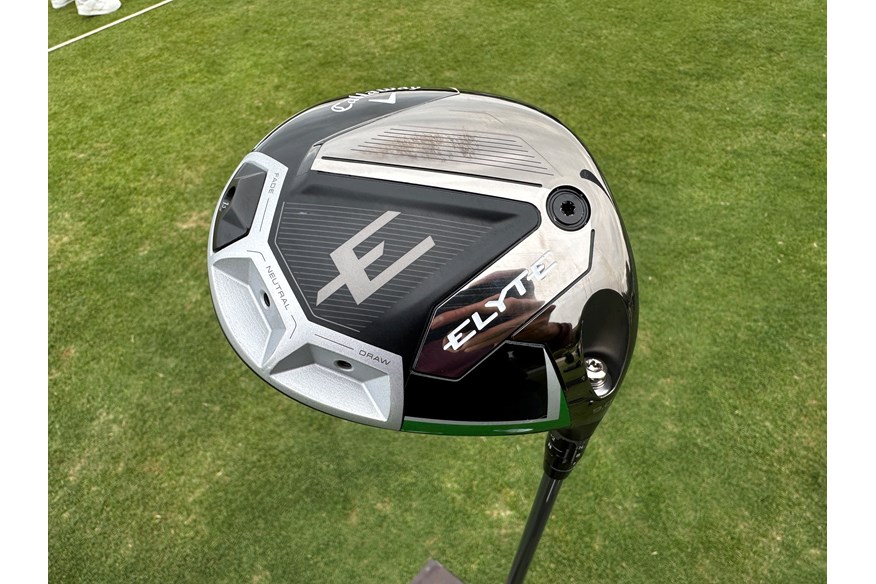
The most forgiving drivers are a great option for golfers prone to spraying shots across the entire face of their driver. The Callaway Elyte falls within this category, as does the TaylorMade Qi35, Ping G440 Max, and Titleist GT2.
Draw Bias
The average club golfer has a handicap of 18 with a typical swing speed hovering around 92/93 mph. Research has shown a majority of these players will hit shots from left to right with a slice (for a right-handed golfer). ‘Slicers’ create more spin, which drains your game of distance and shots frustratingly end up down the right side of the golf course, so most golf club brands produce a ‘Draw Bias’ driver to help counteract the effects of a slice. Callaway makes the Callaway Elyte X, Ping makes the G440 SFT, whereas TaylorMade’s offering is the super forgiving Qi35 Max.
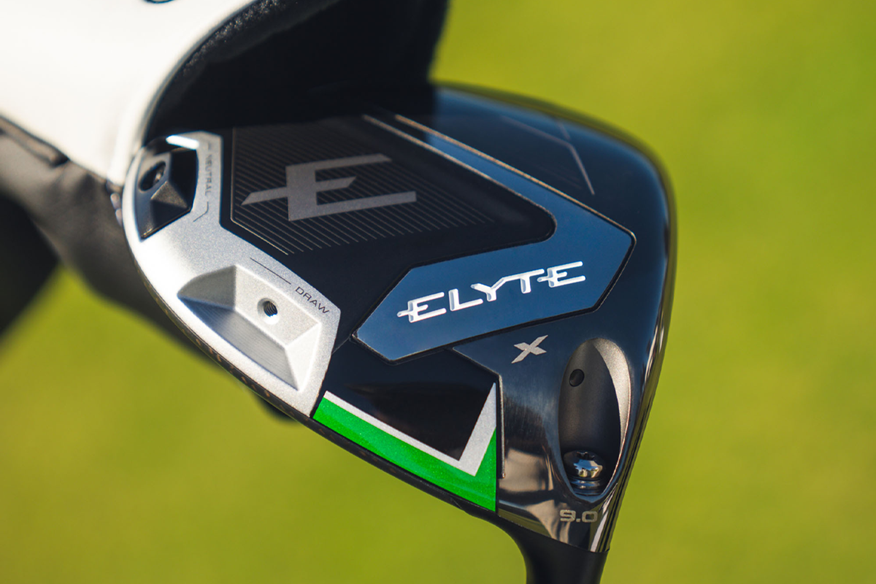
Draw bias drivers have weight positioned more towards the heel, so the head naturally wants to rotate around this heel side center of gravity at impact, which closes the face and helps counteract the effects of a slice.
Lots of golfers believe draw drivers are their most forgiving driver option, however as heel weight is usually further forward than an all-out forgiveness model like the Ping G440 Max this isn’t always the case. An exception to the rule is the TaylorMade Qi35 Max which has an MOI of 10,000 gcm2 and is the company’s easiest to square and most forgiving model.
Mini Driver
Mini Drivers are a pretty modern invention they can serve several purposes for very different players. Mini Drivers have a smaller head size, which is more aerodynamic than a typical driver (300cc rather than 460cc). The size reduction means it’s possible to pick up speed, so even though Mini Drivers usually come with higher lofts (11.5° or 13.5°) golfers can often see very little distance difference between the pair.
Some golfers see the Mini Driver as an alternative to their regular driver off the tee, the shorter shaft length can boost confidence, improve consistency, and up accuracy while giving up very little in terms of ball speed and distance.
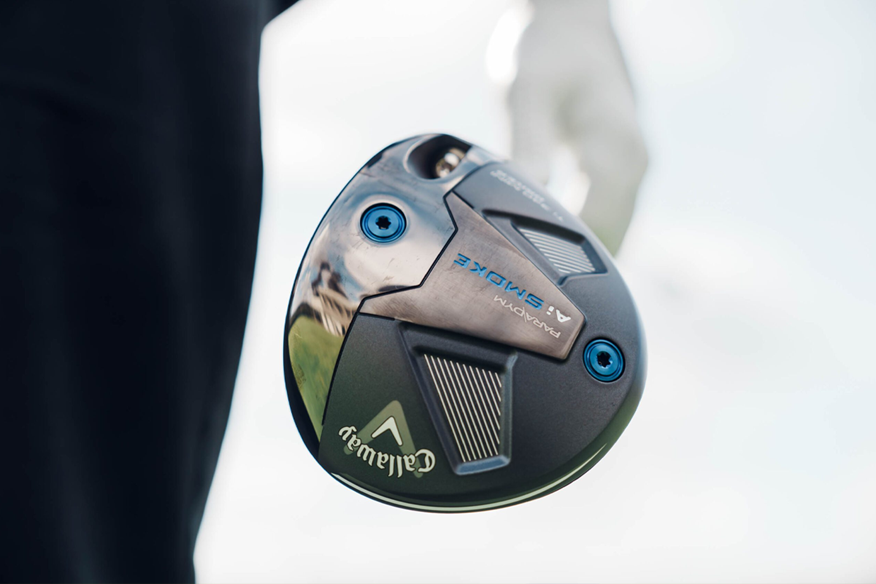
The smaller head size and extra loft mean higher speed players, like Tommy Fleetwood also hit Mini Driver from the fairway (expect a stronger loft than most fairway woods) which can bring the very longest of Par 5s within reach in two shots. Mini Drivers can be a really versatile option, but from all the testing we’ve done you will need strong levels of speed to launch one to a good peak height to get maximum distance from the fairway.
If you’re looking to use the AI Smoke Ti 340 Mini Driver more from the tee I’d suggest looking at the 11.5° loft whereas if you’re after a super strong option from the fairway the 13.5° loft would be a more sensible choice.
Best Callaway Drivers: At a glance:
Best for lowering spin: Callaway Elyte Triple Diamond | VIEW OFFER
Most forgiving: Callaway Elyte | VIEW OFFER
Best for slicers: Callaway Elyte X | VIEW OFFER
Most versatile: Callaway AI Smoke Ti 340 Mini Driver | VIEW OFFER
Best for women golfers: Callaway Big Bertha REVA | VIEW OFFER
Let’s dive into the best Callaway Golf Drivers of 2025…
Best Callaway Drivers 2025
Callaway's smart-faced and low-spinning offering for 2025.
If you do fit the bill and your game is based on consistent hitting at high speeds, our test data highlights the TD as a brilliant performing low spin driver in 2025. At 291 yards carry distance, it ranked right at the top for ball speed and distance, and ranked in the middle ground for left-to-right dispersion.
TG Test Pro Data ( Front Weight):
Ball Speed: 165 mph | Backspin: 2202 rpm | Carry: 291 yds | L-R Dispersion: 33.7 yds
Read our full Callaway Elyte Triple Diamond review.
Pros
- Stunning looks down at address.
- Fast, if not the fastest lower spinning driver head.
- Impressive spin consistency across the face.
Cons
- Overall cosmetics somewhat underwhelming
| Lofts | 8° / 9° / 10.5° |
| Stock shafts | Aretera EC1 Blue, Mitsubishi Chemical Tensei 1k Black, True Temper Denali Charcoal |
| Stock grip | Golf Pride Tour Velvet 360 |
Data comparison: How does the Callaway Elyte TD compare to other leading Low-Spin Drivers (Test Pro data)?
| Manufacturer | Model | Loft (°) | Clubhead Speed (mph) | Ball Speed (mph) (+/- SD) | Carry Distance (yds) (+/- SD) | Spin Total (rpm) (+/- SD) | Launch Angle (°) | Height (yds) | Descent Angle (°) | L-R Dispersion (yds) |
| TaylorMade | Qi35 LS (Forward) | 10.5 | 119.1 | 167.0 (1.3) | 298.0 (8.1) | 2,256 (397) | 13.0 | 38.2 | 40.3 | 23.3 |
| Titleist | GT3 | 10.0 | 117.3 | 165.7 (1.0) | 292.8 (3.1) | 2,378 (186) | 13.0 | 38.9 | 41.6 | 25.2 |
| Titleist | GT4 (Forward) | 10.0 | 116.6 | 165.1 (1.3) | 292.4 (6.0) | 2,274 (363) | 12.9 | 37.1 | 39.9 | 33.3 |
| Callaway | Elyte Triple Diamond (Forward) | 10.5 | 116.5 | 165 (1.5) | 290.8 (6.7) | 2,202 (323) | 11.6 | 32.3 | 36.9 | 33.7 |
| Ping | G440 LST | 10.5 | 115.6 | 164.7 (2.1) | 289.8 (5.4) | 2,502 (311) | 13.7 | 41.6 | 43.8 | 17.7 |
| Srixon | ZXi LS (Forward) | 10.5 | 117.6 | 164.4 (1.0) | 289.4 (4.4) | 2,365 (191) | 12.7 | 37.2 | 41.7 | 46.8 |
| Cobra | DarkSpeed- Adapt LS (Forward) | 10.5 | 117.9 | 164.4 (2.2) | 287.1 (6.4) | 2,504 (414) | 13.3 | 39.9 | 42.7 | 34.8 |
| Wilson Staff | DynaPower LS (Forward) | 10.5 | 114.6 | 162.2 (1.9) | 286.4 (4.7) | 2,228 (194) | 12.8 | 35.1 | 39.6 | 13.6 |
| PXG | Black Ops Tour (Rear) | 10.5 | 114.8 | 162.9 (2.5) | 286.4 (11.1) | 2,126 (594) | 12.6 | 33.1 | 38.4 | 45.6 |
| PXG | Black Ops Tour (Forward) | 10.5 | 112.5 | 164.5 (1.6) | 286.2 (5.2) | 2,204 (293) | 11.2 | 30.4 | 36.8 | 25.4 |
| Callaway | Elyte Triple Diamond (Rear) | 10.5 | 116.1 | 164.2 (1.5) | 286.2 (6.3) | 2,516 (310) | 12.8 | 38.3 | 41.7 | 25.7 |
| TaylorMade | Qi35 LS (Rear) | 10.5 | 117.4 | 165.6 (1.5) | 284.6 (6.8) | 2,715 (466) | 11.9 | 37.6 | 42.0 | 39.0 |
| Cobra | DarkSpeed- Adapt LS (Rear) | 10.5 | 117.4 | 165.2 (2.2) | 284.2 (3.9) | 2,778 (142) | 12.3 | 39.8 | 43.3 | 32.1 |
| Srixon | ZXi LS (Rear) | 10.5 | 116.4 | 161.8 (2.5) | 282.6 (5.2) | 2,337 (172) | 11.8 | 33.3 | 39.4 | 33.0 |
| Wilson Staff | DynaPower LS (Rear) | 10.5 | 114.6 | 161.6 (1.3) | 282.1 (2.0) | 2,408 (229) | 12.9 | 36.8 | 41.4 | 15.9 |
| Titleist | GT4 (Rear) | 10.0 | 117.2 | 163.1 (2.0) | 277.7 (13.2) | 2,876 (558) | 12.8 | 39.7 | 43.5 | 50.9 |
A sweeter performance no matter where shots hit the face.
At 283 yards, the Callaway Elyte driver sat in 3rd place for distance for all core models, with the overall metrics of the product showcasing how it truly has no faults. It didn't score any podium positions, but from out testing pro's experience alongside other testers, we've seen this go in several of our bags for the golfing season.
TG Test Pro Data
Ball Speed: 165.3 mph | Backspin: 2622 rpm | Carry: 283.3 yds | L-R Dispersion: 26.1 yds
Read our full Callaway Elyte Driver review.
Pros
- Distance gains over Ai Smoke
- Confidence inspiring crown and sound
- Clean design
Cons
- Hosel adaptor limited compared to some brands
| Lofts | 9° / 10.5° / 12° |
| Stock shafts | True Temper Project X Denali Charcoal 50g (5.5-R, 6.0-S) and 60g (6.0-S, 6.5-X); Mitsubishi Chemical Vanquish PL 40G (R2) |
| Stock grip | Golf Pride Tour Velvet 360 |
Data comparison: How does the Callaway Elyte compare to other leading Forgiving Drivers (Test Pro data)?
| Manufacturer | Model | Loft (°) | Clubhead Speed (mph) | Ball Speed (mph) (+/- SD) | Carry Distance (yds) (+/- SD) | Spin Total (rpm) (+/- SD) | Launch Angle (°) | Height (yds) | Descent Angle (°) | L-R Dispersion (yds) |
| Wilson Staff | DynaPower Carbon (Forward) | 10.5 | 117 | 165.2 (2.6) | 289.9 (8.3) | 2,442 (478) | 12.8 | 38.1 | 42.0 | 44.3 |
| Wilson Staff | DynaPower Carbon (Rear) | 10.5 | 115.6 | 165.3 (1.3) | 284.8 (5.8) | 2,682 (187) | 11.7 | 37.4 | 42.3 | 16.1 |
| TaylorMade | Qi35 (Forward) | 10.5 | 116.1 | 163.0 (2.0) | 283.7 (4.8) | 2,284 (503) | 11.8 | 32.5 | 37.7 | 27.0 |
| Callaway | Elyte | 10.5 | 117.3 | 165.3 (0.6) | 283.3 (6.7) | 2,692 (443) | 11.4 | 35.7 | 40.8 | 26.1 |
| Cobra | DarkSpeed-Adapt X (Forward) | 10.5 | 116.2 | 161.1 (1.6) | 282.4 (7.1) | 2,443 (308) | 12.9 | 37.1 | 42.1 | 36.7 |
| Ping | G440 Max | 10.5 | 115.1 | 163.1 (1.3) | 281.8 (5.7) | 2,702 (344) | 12.9 | 39.9 | 43.7 | 31.9 |
| Titleist | GT2 | 10.0 | 115.5 | 163.1 (1.6) | 280.4 (5.3) | 2,728 (249) | 12.1 | 37.9 | 41.9 | 26.2 |
| PXG | Black Ops (Forward) | 10.5 | 113.7 | 163.1 (0.9) | 280.1 (6.4) | 2,610 (398) | 11.2 | 34.0 | 40.3 | 25.6 |
| PXG | Black Ops (Rear) | 10.5 | 113.2 | 162.5 (1.8) | 278.0 (5.9) | 2,696 (221) | 12.0 | 36.7 | 42.1 | 41.9 |
| Cobra | DarkSpeed-Adapt X (Rear) | 10.5 | 116.7 | 161.4 (1.6) | 276.8 (6.3) | 2,777 (293) | 12.9 | 39.6 | 44.0 | 21.5 |
| TaylorMade | Qi35 (Rear) | 10.5 | 115.9 | 162.4 (1.3) | 275.8 (7.0) | 2,856 (407) | 11.7 | 36.7 | 41.9 | 17.9 |
| Srixon | ZXi | 10.5 | 115.3 | 161.1 (1.9) | 275.4 (6.4) | 2,822 (399) | 13.4 | 40.9 | 45.0 | 48.4 |
An AI-inspired slice buster with excellent all-round performance.
Similar to other Elyte models, the Elyte X yielded very positive results across the board with our data testing. As expected, it did feel very difficult to hit a slice with the club (although not impossible). The ball speed retention was the metric that impressed us the most during the test.
TG Test Pro Data
Ball Speed: 165.3 mph | Backspin: 2622 rpm | Carry: 283.3 yds | L-R Dispersion: 26.1 yds
Read our full Callaway Elyte X driver review.
Pros
- The optimized Smart Face is tailored to those struggling with a slice.
- One of the longest and most forgiving draw drivers available.
- Some clever topline shaping means the face doesn't look massively closed at address.
- Powerful and stable through impact.
Cons
- Some may prefer less busy aesthetics.
| Lofts | 9° / 10.5° / 12° |
| Stock shafts | True Temper Project X Denali Charcoal 50g (5.5-R, 6.0-S) and 60g (6.0-S, 6.5-X) Mitsubishi Chemical Vanquish PL 40g (R2, R) <br>Women’s Mitsubishi Chemical Eldio 40g (L) |
| Stock grip | Golf Pride Tour Velvet 360. |
Data comparison: How does the Callaway Elyte X compare to other leading Draw Drivers?
| Manufacturer | Model | Loft (°) | Clubhead Speed (mph) | Ball Speed (mph) (+/- SD) | Carry Distance (yds) (+/- SD) | Spin Total (rpm) (+/- SD) | Launch Angle (°) | Height (yds) | Descent Angle (°) | L-R Dispersion (yds) |
| Wilson Staff | DynaPower Carbon (Forward) | 10.5 | 117 | 165.2 (2.6) | 289.9 (8.3) | 2,442 (478) | 12.8 | 38.1 | 42.0 | 44.3 |
| Wilson Staff | DynaPower Carbon (Rear) | 10.5 | 115.6 | 165.3 (1.3) | 284.8 (5.8) | 2,682 (187) | 11.7 | 37.4 | 42.3 | 16.1 |
| TaylorMade | Qi35 (Forward) | 10.5 | 116.1 | 163.0 (2.0) | 283.7 (4.8) | 2,284 (503) | 11.8 | 32.5 | 37.7 | 27.0 |
| Callaway | Elyte | 10.5 | 117.3 | 165.3 (0.6) | 283.3 (6.7) | 2,692 (443) | 11.4 | 35.7 | 40.8 | 26.1 |
| Cobra | DarkSpeed-Adapt X (Forward) | 10.5 | 116.2 | 161.1 (1.6) | 282.4 (7.1) | 2,443 (308) | 12.9 | 37.1 | 42.1 | 36.7 |
| Ping | G440 Max | 10.5 | 115.1 | 163.1 (1.3) | 281.8 (5.7) | 2,702 (344) | 12.9 | 39.9 | 43.7 | 31.9 |
| Titleist | GT2 | 10.0 | 115.5 | 163.1 (1.6) | 280.4 (5.3) | 2,728 (249) | 12.1 | 37.9 | 41.9 | 26.2 |
| PXG | Black Ops (Forward) | 10.5 | 113.7 | 163.1 (0.9) | 280.1 (6.4) | 2,610 (398) | 11.2 | 34.0 | 40.3 | 25.6 |
| PXG | Black Ops (Rear) | 10.5 | 113.2 | 162.5 (1.8) | 278.0 (5.9) | 2,696 (221) | 12.0 | 36.7 | 42.1 | 41.9 |
| Cobra | DarkSpeed-Adapt X (Rear) | 10.5 | 116.7 | 161.4 (1.6) | 276.8 (6.3) | 2,777 (293) | 12.9 | 39.6 | 44.0 | 21.5 |
| TaylorMade | Qi35 (Rear) | 10.5 | 115.9 | 162.4 (1.3) | 275.8 (7.0) | 2,856 (407) | 11.7 | 36.7 | 41.9 | 17.9 |
| Srixon | ZXi | 10.5 | 115.3 | 161.1 (1.9) | 275.4 (6.4) | 2,822 (399) | 13.4 | 40.9 | 45.0 | 48.4 |
Best Callaway Driver for Women Golfers
The brand conducted extensive performance-data research and carried out huge amounts of testing with golfers before reworking the technologies that make Big Bertha drivers long, straight, and easy to hit to ensure Reva delivers exactly what women need for their game.
The Reva features a Callaway Artificial Intelligence-designed Flash Face, which is stronger and lighter to provide faster ball speeds across more of the face.
Reva also uses Callaway’s coveted Jailbreak technology. Bars behind the face help increase its flex for even more distance, while the lightweight carbon crown has allowed weight to be placed elsewhere for more forgiveness.
There’s also a speed-enhancing RCH 40 shaft and Lamkin Women’s ST Soft Grip, making this one of the best drivers for women golfers.
Pros
- Great ball speeds
- Excellent forgiveness
- Smart design
Cons
- No sliding weight for shot shaping adjustability
| Lofts: | 10.5°, 12.5° |
| Stock shaft: | Callaway RCH (65g R, S) 55g (L, R, S) 45g (L, R) |
Best Older Callaway Drivers
Sweeter from every spot
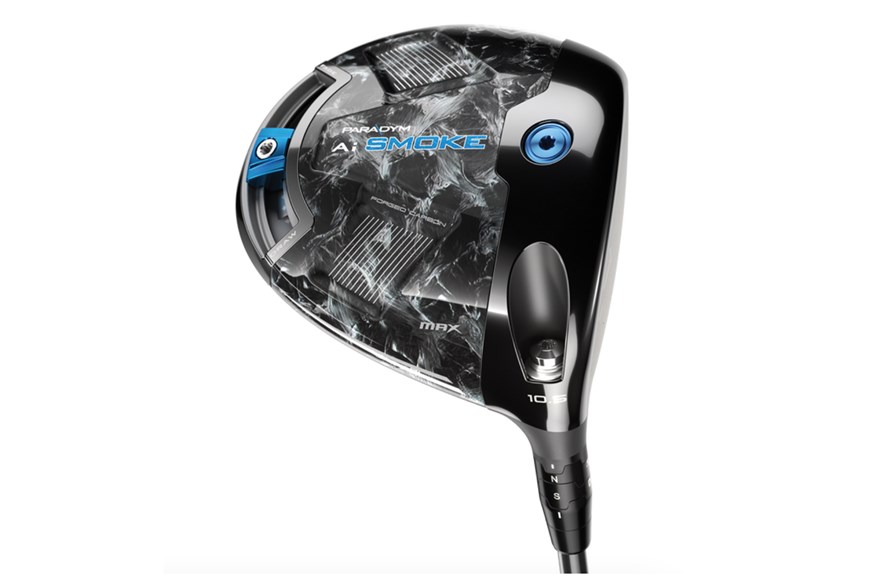

This is a good looking, fast driver that is now a very acceptable price. Expect premium adjustability, increased ball speed and confidence at address with the flagship model for Callaways' 2024 offering.
An industry first
The unique finish is appealing at address and will give any golfer the confidence to hit their desired target off the tee. We found the core model to be the highest performing product for amateur golfers.
How we tested the best Callaway drivers
To test golf equipment, we create a controlled indoor environment at Keele Golf Centre and use a premium tour-level golf ball (the Titleist Pro V1x). We collect data from every shot our test pro is happy with, using a Foresight GC Quad launch monitor. Draw driver models are hit by Equipment Editor Simon Daddow, and Women’s drivers are tested by TG Deputy Editor Sarah Pyett.
Find out more about how we test golf equipment.
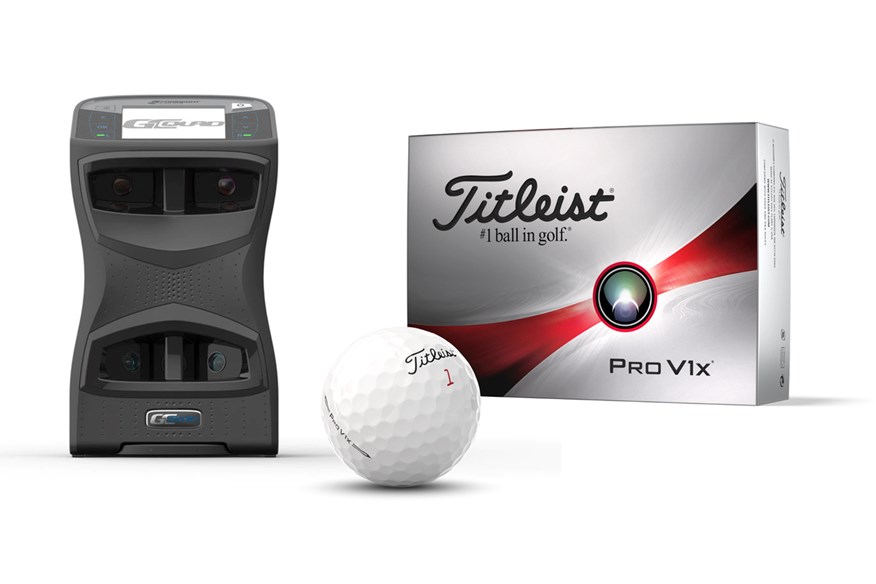
Why do we use a Titleist Prto V1x golf ball?
It would be easy to use just one test golf ball brand every year, but that inevitably leads to criticism for being too closely aligned to one manufacturer, especially if that brand’s equipment performs particularly well. To ensure fairness we like to switch manufacturers each year. For 2024 we’ve used the Titleist Pro V1x.
The brand revealed the latest Pro V1x model in 2023, and Titleist’s Senior Director of Golf Ball Research and Engineering, Mike Madson says “Consistency means when a golfer tees up a Pro V1 or Pro V1x, every properly executed shot they make is going to deliver the performance they expect and the performance they trust.”
Thanks to the Titleist Pro V1 and Pro V1x mopping up mountains of tour wins across all global tours we know the model is trusted by the world’s very best.
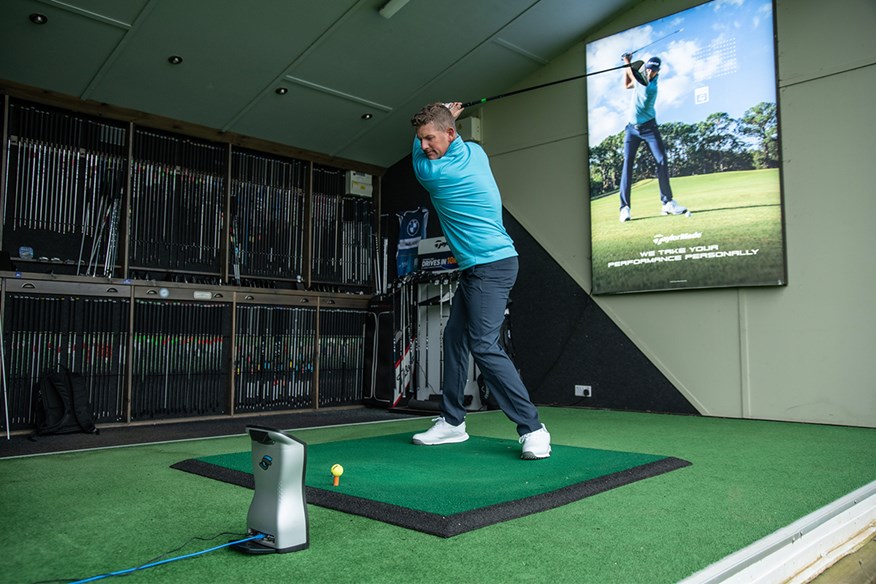
Why do we use a pro tester?
Speak to any golf club engineer about product testing and they all talk about needing a repeatable, reliable strike to offer any sort of valuable comparison. So, whilst we accept not all of the equipment included within our tests was designed for our test pro, what our data shows is a great comparison of how clubs in each particular category differ, which is hugely valuable in helping you narrow your choice as a consumer.
In 2024 we’ve tested over 50 different drivers in many different settings, during which our test pro has needed to delete very few mishit shots. He’s hit the flag from 300 yards, he has hit fades, draws, and nailed countless shots straight at his target, and he will also regularly hit 300 driver shots in a day. In short, Neil Wain is the perfect club tester due to his consistency in delivering accurate and reliable comparative data and he loves hitting balls all day long.
We would of course always recommend attending a proper fitting session, to ensure any purchase is tailored to your game.
Watch: The Best Drivers 2024 video
Best Callaway Drivers: Buying Advice & FAQs
How often does Callaway update their drivers?
Where Titleist and Ping tend to reveal new drivers every two years as they feel it takes time to work up designs that incorporate worthwhile new technologies brands like Callaway and TaylorMade usually release drivers on a 12-month cycle.
You can expect new models to appear within the first couple weeks of January, and towards the end of the year if stock levels are high you might find some on special offer or at clearance prices.

Which tour pros play Callaway drivers?
As golf’s biggest brand (the company turns over more money than any other thanks to also owning Top Golf, Travis Mathew, Ogio, and Peter Storm) Callaway has a huge tour team playing on the biggest global tours on a weekly basis. Jon Rahm and Xander Schauffele are some of the biggest names to play Callaway drivers, they’re accompanied by the likes of Sam Burns, Nicolai Hojgaard, Ronni Yin, and Rose Zhang.
Sponsoring multiple elite-level athletes means the Callaway logo is never too far away from the winner’s circle. The brand’s most popular tour driver is the Elyte Triple Diamond, which is made in a number of configurations for the tour team.
Which Callaway driver is most forgiving?
When I sat down with Callaway’s engineers and designers to learn about the Elyte family at the end of 2025 the company seemed a little on the back foot as talk already swirled about the TaylorMade Qi35 Max and Ping G430 Max 10K drivers, both of which boasted more MOI than any of the Callaway Ai Smoke drivers.
The most forgiving Callaway driver is the Elyte X, its MOI is above 9,000 gcm2, yet Callaway says golfers can expect it to perform like a higher MOI driver than the numbers suggest thanks to micro-trampolines on the AI-Smart Face which tighten dispersion and help counteract miss hit shots.
From my on-course experience and our test pro results, I’d say the Elyte is just as forgiving as any higher MOI driver on the market in 2025.
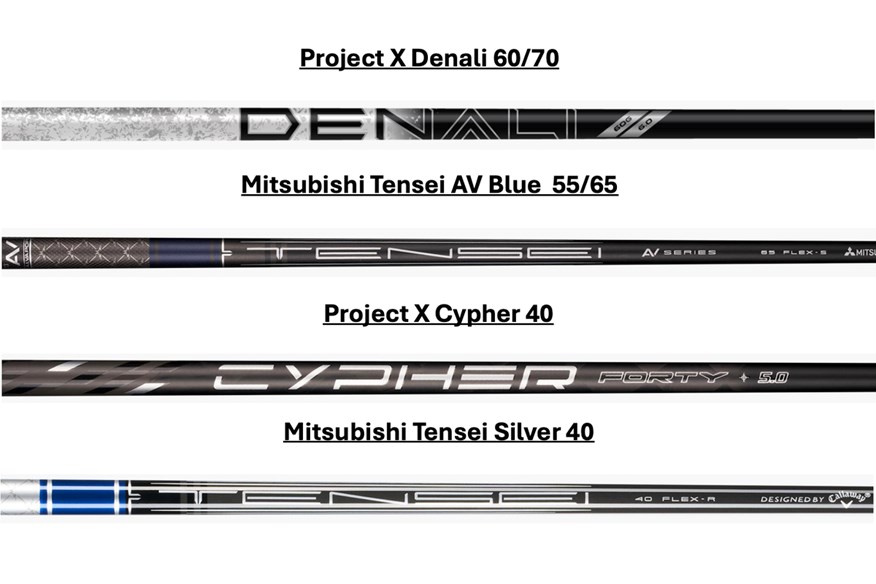
Which stock shafts are Callaway offering in their drivers in 2025?
The AI Smoke drivers come with an excellent range of stock shafts so golfers can dial in a desired ball flight to benefit their game no matter their speed. Higher speed/spin players will likely look at the low launch Project X Denali which had been a hit out on tour in 2024. Those looking to maintain a mid-launch and spin flight should look at the Mitsubishi Tensei AV Series Blue, while lesser-speed players will likely benefit from exploring the lighter higher launching Project X Cyper 2.0.
For players specifically looking to boost club speed as their number one priority the Max Fast driver will be the best option, this model comes with a very lightweight Mitsubishi Tensei Silver shaft.
How is the Elyte Max Fast driver different from the rest of the family?
The Max Fast is a brand new model in the US and Europe over the last 2 years, but Callaway has made something similar in Japan for several years. At 270g this is very much a super lightweight (it’s 35g lighter than the Max), easy-launch model. It replaces the Callaway Paradym Star products we’ve seen in the West before. The idea revolves around boosting club speed thanks to being so lightweight.
Expect a fixed hosel and no sliding sole weight. This design is optimized to deliver speed to golfers who don’t already have it. Thanks to a 40g shaft and lightweight grip this very hi-tech model is a strong option for slower swing speed players.
Should I consider buying a second-hand Callaway driver?
Absolutely do not write off buying a used Callaway driver, the brand has made plenty of excellent models over the years. Obviously, any used model from previous years won’t have the very latest game-improving technology built-in but many golfers would argue it’s hard to spot marginal gains between successive models. The average life expectancy for a driver is around five years, so you will see a difference between 5 – 8 year old models and the AI Smoke available today.
If you really want a good all-round driver you have to look at the Elyte even though it’s only been available in 2025 so will likely cost more money. The Elyteis Callaway’s best current high MOI driver there should though be some used and ready-for-resale models in the market. Always make sure you hit and try any second-hand purchases before taking the plunge.
-
 Best Callaway Drivers
Best Callaway Drivers
-
 The 2024 Callaway stock driver shafts
The 2024 Callaway stock driver shafts
-
 A graphic to show the size difference between the Callaway AI Smoke Max and Ti 340 Mini Drivers
A graphic to show the size difference between the Callaway AI Smoke Max and Ti 340 Mini Drivers
-
 A graphic to show where the extra heel weight is positioned on the Callaway AI Smoke Max D draw driver
A graphic to show where the extra heel weight is positioned on the Callaway AI Smoke Max D draw driver
-
 An image to show how the Callaway AI Smoke Max driver is more back weighted
An image to show how the Callaway AI Smoke Max driver is more back weighted
-
 An image to show the front weighted Callaway AI Smoke Triple Diamond driver
An image to show the front weighted Callaway AI Smoke Triple Diamond driver
-
 A close up of the Callaway Big Bertha Reva driver face
A close up of the Callaway Big Bertha Reva driver face
-
 How the Callaway Big Bertha Reva driver looks in the play position
How the Callaway Big Bertha Reva driver looks in the play position
-
 The sole detailing of the Callaway Big Bertha Reva Driver
The sole detailing of the Callaway Big Bertha Reva Driver
-
 Four tour pros who play Callaway Ai Smoke drivers
Four tour pros who play Callaway Ai Smoke drivers

